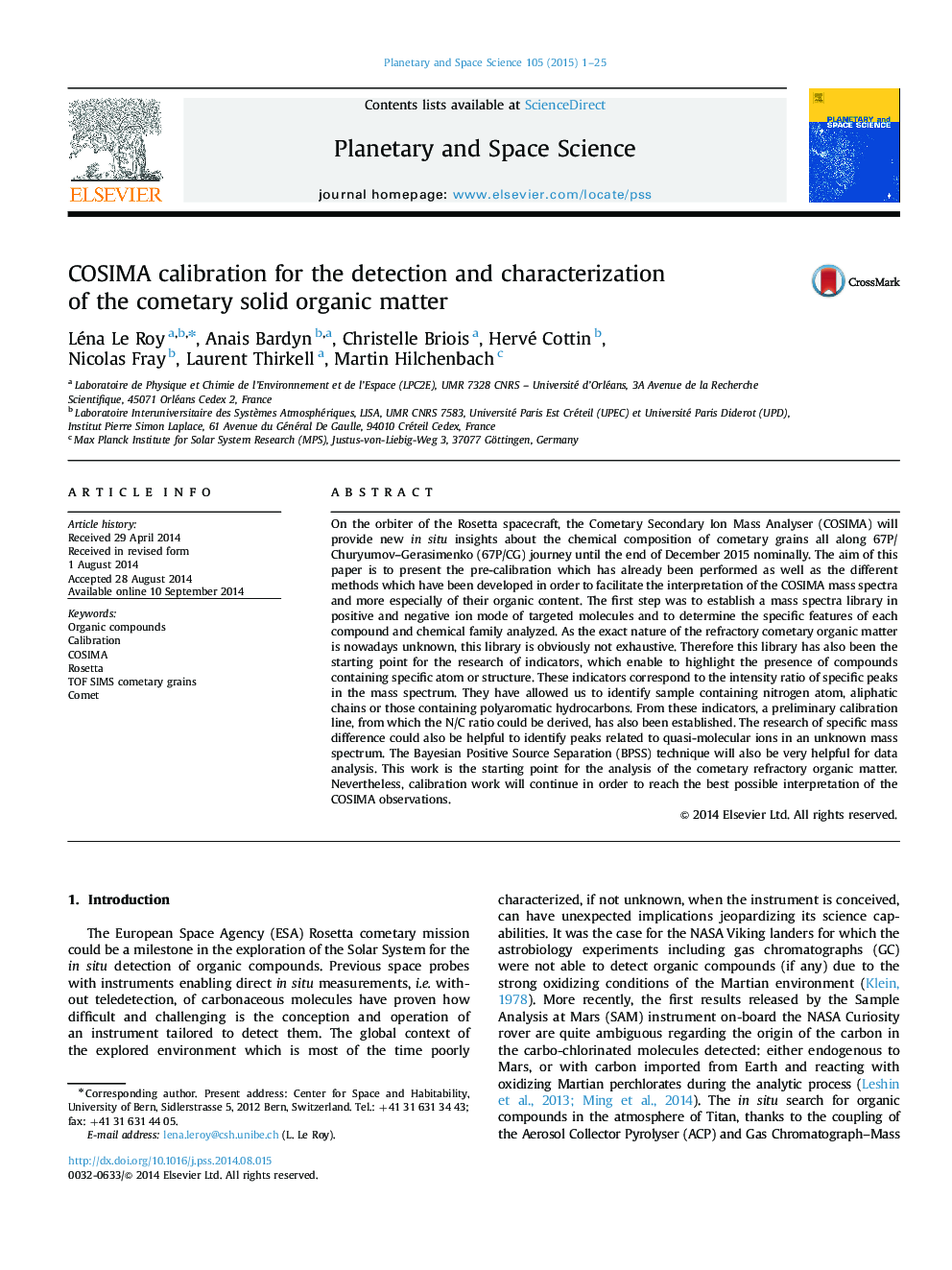| Article ID | Journal | Published Year | Pages | File Type |
|---|---|---|---|---|
| 1781060 | Planetary and Space Science | 2015 | 25 Pages |
•A strategy for solid cometary organic matter characterization by TOF-SIMS has been developed.•A mass spectra library of relevant organic molecules was initiated.•A method to highlight polymeric structure has been developed.•BPSS technique is valuable for COSIMA data analysis.•Tentative calibration for N/C elemental ratio is proposed.
On the orbiter of the Rosetta spacecraft, the Cometary Secondary Ion Mass Analyser (COSIMA) will provide new in situ insights about the chemical composition of cometary grains all along 67P/Churyumov–Gerasimenko (67P/CG) journey until the end of December 2015 nominally. The aim of this paper is to present the pre-calibration which has already been performed as well as the different methods which have been developed in order to facilitate the interpretation of the COSIMA mass spectra and more especially of their organic content. The first step was to establish a mass spectra library in positive and negative ion mode of targeted molecules and to determine the specific features of each compound and chemical family analyzed. As the exact nature of the refractory cometary organic matter is nowadays unknown, this library is obviously not exhaustive. Therefore this library has also been the starting point for the research of indicators, which enable to highlight the presence of compounds containing specific atom or structure. These indicators correspond to the intensity ratio of specific peaks in the mass spectrum. They have allowed us to identify sample containing nitrogen atom, aliphatic chains or those containing polyaromatic hydrocarbons. From these indicators, a preliminary calibration line, from which the N/C ratio could be derived, has also been established. The research of specific mass difference could also be helpful to identify peaks related to quasi-molecular ions in an unknown mass spectrum. The Bayesian Positive Source Separation (BPSS) technique will also be very helpful for data analysis. This work is the starting point for the analysis of the cometary refractory organic matter. Nevertheless, calibration work will continue in order to reach the best possible interpretation of the COSIMA observations.
